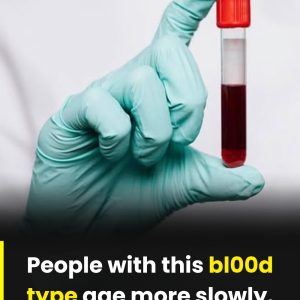## The Silent Danger: How a Healthy 32-Year-Old Teacher Nearly Lost Her Life to Severe Diabetes
At just 32 years old, a young teacher who lived what many would consider a healthy lifestyle found herself in a life-threatening battle with severe diabetes. She wasn’t overweight, didn’t overindulge in sweets, and maintained what she thought were balanced habits. Yet her condition worsened rapidly, leaving doctors racing to stabilize her.
Her story is a sobering reminder that diabetes can affect anyone — even those who don’t fit the “typical” profile — and that some of the foods we eat every day may quietly contribute to its development.
—
### A Hidden Crisis
When the teacher was admitted to the hospital, her blood sugar levels were dangerously high. She had been experiencing fatigue, increased thirst, and unexplained weight changes, but dismissed them as stress-related. Within weeks, her condition escalated, putting her at risk of organ damage and even death.
Doctors emphasized that diabetes is not just about sugar and weight. Genetics, stress, and hidden dietary habits all play a role. In her case, the culprit wasn’t candy or desserts — it was everyday foods that many people assume are harmless.
—
### The “Silent Killers” in Our Diet
Medical experts caution that three common food categories may quietly raise diabetes risk and worsen the disease, even in people who consider themselves healthy:
1. **Refined Carbohydrates**
White bread, pasta, and processed cereals break down quickly into glucose, spiking blood sugar levels. Unlike whole grains, refined carbs lack fiber, which normally helps slow absorption. Over time, repeated spikes can strain insulin function and lead to insulin resistance.
2. **Sugary Drinks and “Hidden Sugars”**
Even if someone avoids desserts, sugary beverages — like sodas, flavored coffees, and even certain fruit juices — deliver a concentrated dose of sugar. What makes them more dangerous is how easily they’re consumed without making you feel full, leading to higher overall intake. Many packaged foods, from sauces to “low-fat” snacks, also contain hidden sugars that add up quickly.
3. **Processed Meats and High-Sodium Foods**
Items like bacon, sausages, and deli meats are not just linked to heart disease but also to diabetes risk. Their high sodium, preservative, and saturated fat content contribute to inflammation and metabolic stress. Regular consumption can worsen insulin resistance and increase long-term health risks.
—
### Lessons from Her Recovery
The teacher’s case ended with a positive outcome. After intensive treatment and dietary changes, she stabilized and now manages her condition with medical support and lifestyle adjustments. Her doctors emphasize early detection: knowing the warning signs — extreme thirst, frequent urination, fatigue, and blurred vision — can save lives.
They also stress prevention. Choosing whole foods, reducing refined carbs, limiting processed meats, and being mindful of hidden sugars can significantly lower risk. Pairing these habits with regular exercise, stress management, and routine check-ups provides the best defense.
—
## The Takeaway
Diabetes doesn’t always announce itself with obvious causes. It can strike unexpectedly, even in young, seemingly healthy individuals. The case of this 32-year-old teacher is a reminder that the real danger often lies in what we normalize — the foods and drinks we consume every day without question.
By paying attention to diet, lifestyle, and early symptoms, we can catch problems before they escalate — and avoid the silent killers hiding in plain sight.





